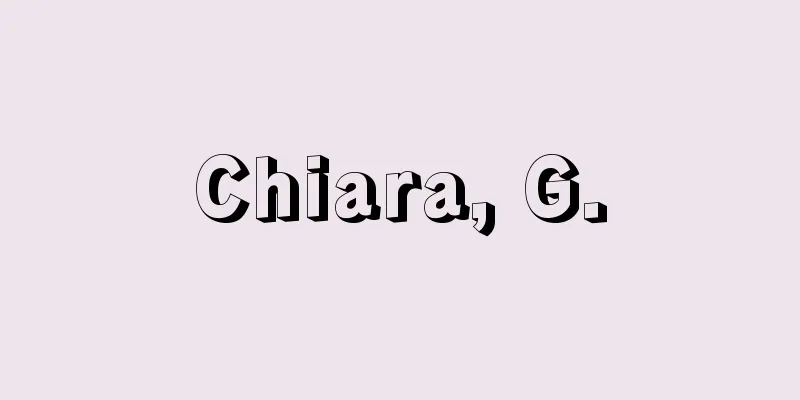Kara (English spelling)

|
Name of region and country in ancient Korea. According to the first detailed document, "Records of the Three Kingdoms," "Wei Zhi Dongyi Zhuan," the ancient South Korean region was divided into various Koreas. The character "Kara" is interpreted as a transliteration of the Chinese character "kara," but there are many different theories about its original meaning and it is unclear. The most representative of the Gaya countries are the North and South, and the South is the original country of the so-called Mimana countries, and is also called "Mimana Gaya," "South Gaya," or "Geumgwan Gaya" (also written as Garak or Garak). It was a country centered on the downstream of the Nakdonggang River, around Gimhae in South Gyeongsang Province, and was a powerful country among the Mimana countries, but when Silla rose to power, King Geumgwan surrendered to Silla in the 19th year of King Beopheung's reign (532) and was annexed. The representative country in the north was simply called "Gara", but was also called "Goryeong-Gara", "Daegaya" or "Daega", and was centered around the area of present-day Goryeong in South Gyeongsang Province. According to the "Samguk Sagi", in 562 it was annexed by King Jinheung of Silla along with the remaining Mimana states. This is the "fall of Mimana" as reported in the "Nihon Shoki". It is also noteworthy that these two Kara states, north and south, each had their own unique legends. The name "Mimana-Gara" also appears in the famous text of the "King Gwanggaeto Stele". Source: Encyclopaedia Britannica Concise Encyclopedia About Encyclopaedia Britannica Concise Encyclopedia Information |
|
古代朝鮮の地域名,国名。朝鮮半島南部の状態について最も詳細に記述した最初の文献『三国志』魏志東夷伝によれば,古代の南朝鮮地方には諸韓国が分立していたという。この「韓」は「から」を音訳した漢字と解釈されているが,その原義については異説多く不明である。加羅諸国のなかで代表的なものは南北2国あり,南がいわゆる任那諸国の原体ともいうべき国で,「任那加羅」あるいは「南加羅」,または「金官加羅」 (伽落または伽洛とも記す) ともいう。洛東江下流,現慶尚南道金海付近を中心とした国で任那諸国のなかで有力な国であったが,新羅が台頭すると法興王 19 (532) 年,金官国王は新羅に投降し併合された。北方の代表的な国は,単に「加羅」ともいうが「高霊加羅」あるいは「大加耶」「大加羅」などと呼称された国で現慶尚南道高霊付近を中心としたが,『三国史記』によれば 562年残存の任那諸国とともに新羅の真興王に併合された。これが『日本書紀』に伝える「任那の滅亡」である。なおこの南北2つの加羅国はそれぞれ独自の伝承をもつ点でも注目される。また「任那加羅」という名称は有名な「広開土王碑」文に現れている。
出典 ブリタニカ国際大百科事典 小項目事典ブリタニカ国際大百科事典 小項目事典について 情報 |
Recommend
Buried object - Umemono
〘 noun 〙 Decoration of lacquerware and other craft...
"Diary of a Madman" (Lu Xun)
...The idea that the family system, which was the...
Charlemagne
…King of the Franks (768-814), King of the Lombar...
Lek
…The topography that forms the backbone of the co...
Seokchang-ri Historic Site - Seokchang-ri Historic Site (English)
Located in Seokjang-ri, Janggi-myeon, Gongju-gun, ...
Cut sushi - Cut sushi
…This is how box sushi (pressed sushi) was invent...
Asojiro - Asojiro
…Then, Sawamura Tanosuke II, who had come to Osak...
Atomic orbital functions - atomic orbital functions
Within an atom, individual electron clouds are ass...
Indian marsh deer - indonumajika
…Also known as the Indian marsh deer or marsh dee...
Moley, R.
...In the 1932 US presidential election, the Demo...
Jishiden - Jishiden
〘Name〙 During the Nara and Heian periods, a public...
Epicattleya
...Interspecific hybridization is rare, but inter...
Chyornyi, I.
...After conquering Kamchatka at the end of the 1...
Canopy
It means a lid hung from the sky, and refers to a...
Snowbreak forest - Bosetsurin
A forest protects railways, roads, homes, and vil...









